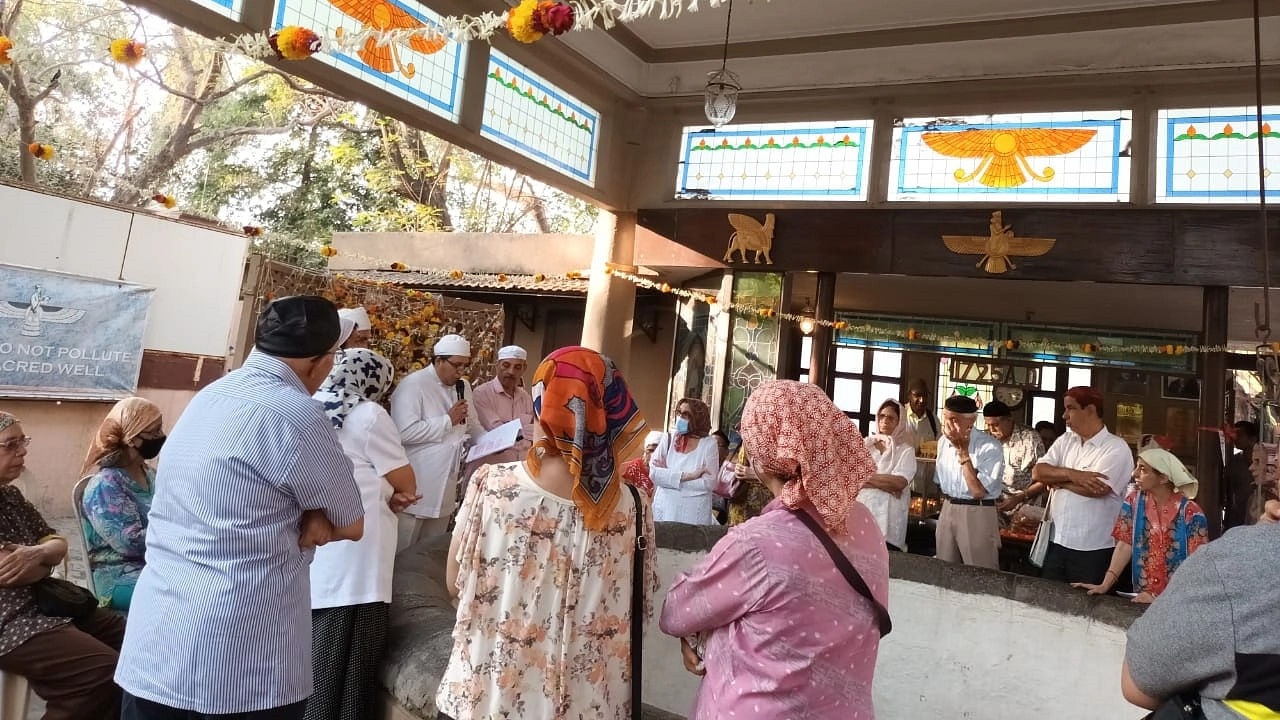This fresh-water well, situated adjacent to Cross Maidan, holds significant historical and cultural value for Parsi-Zoroastrians and is a designated landmark on Mumbai’s urban heritage list.
Article by Manoj Ramakrishnan | Free Press Journal
FPJ
The extensive restoration work on the iconic 300-year-old Bhikha Behram well in Churchgate, aimed at preventing flooding during the monsoon season, has been successfully finished.
This fresh-water well, situated adjacent to Cross Maidan, holds significant historical and cultural value for Parsi-Zoroastrians and is a designated landmark on Mumbai’s urban heritage list. The restoration was necessitated due to the deterioration of the old stone flooring within the well compound. Additionally, the elevation of the surrounding roads had caused frequent flooding during the rainy season.
Worshippers visiting the site had reported accidents and injuries due to the damaged floor. As the well enjoys protected status, any structural modifications require approval from the Mumbai Heritage Conservation Committee (MHCC) of the Brihanmumbai Municipal Corporation (BMC). Following the completion of the repairs, the architectural team has applied for a ‘completion certificate’ from the MHCC.
Kirtida Unwalla of K Unwalla Architects, responsible for the restoration, explained, “Overall restoration was done around 10 years ago. These repairs were meant for the paving.”
The original stone flooring, composed of Kota stone, was replaced with ceramic tiles designed to closely resemble the appearance of the stone. “The ceramic tiles are compatible in color and texture with the old floor tiles. The changes were approved by the heritage committee,” stated Unwalla.
To resolve the issue of monsoon flooding, architects raised the floor level by 100 mm and provided a slight slope for improved drainage. Additionally, the parapet height surrounding the well compound was raised by 250 mm. Consequently, the door frames in the adjacent structures were also adjusted to accommodate the raised floor, Unwalla noted.
Viraf Kapadia of the Bhikha Behram Well Trust highlighted that the elevated footpaths surrounding the well required careful navigation by worshippers entering the compound.
The Bhikha Behram well, constructed in AD 1725 by prosperous Parsi trader Bhikhaji Behram Panday, originally served as a source of drinking water for travelers. Today, it remains a place of worship for Parsi-Zoroastrians who offer prayers and light lamps in the compound. Non-Zoroastrians can access potable water through water pipes situated around the well. The well also features a water trough for draught animals and continues to provide a source of fresh water, despite its proximity to the sea.
Around 1999, the well underwent significant repairs, including structural reinforcement and the conservation of stained glass decorations on the pavilion. Several stained glass pieces had to be replaced following an act of vandalism. Subsequent restoration efforts have been undertaken to preserve this important cultural landmark.
The Bhikha Behram well holds a Grade II A protected structure designation under Mumbai’s heritage conservation laws, signifying its substantial historical and cultural significance.

